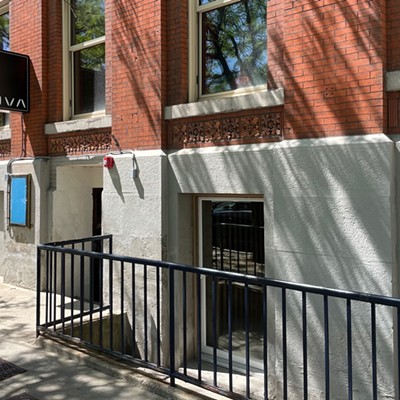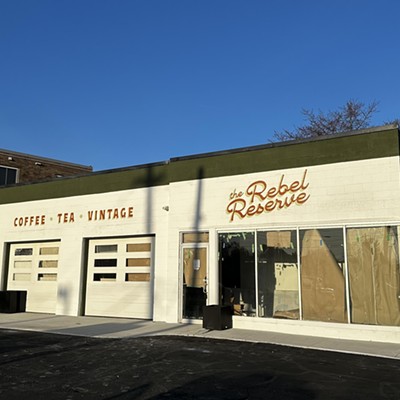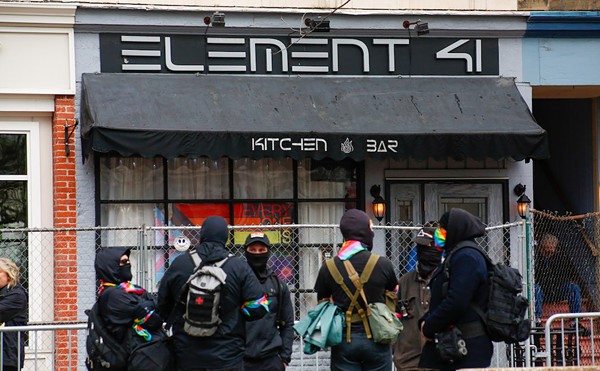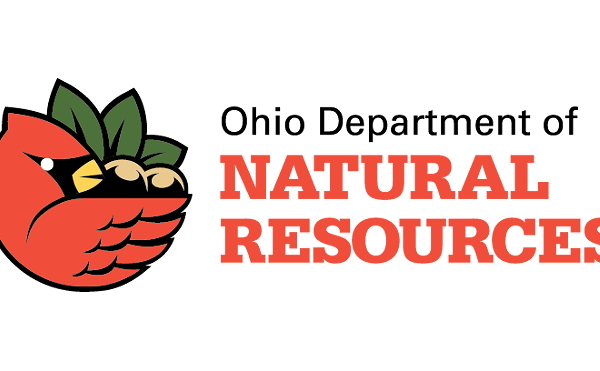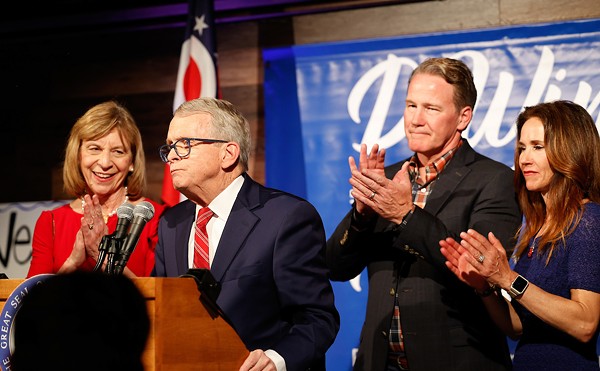HSBC, one of the biggest banks on the planet, has taken to calling itself "the world's local bank." Winn-Dixie, a 500-outlet supermarket chain spanning five southern states, recently launched an ad campaign under the tagline "Local flavor since 1956." The International Council of Shopping Centers, a global consortium of mall owners and developers, is pouring millions of dollars into television ads urging people to "Shop Local" — at their nearest mall. Even Wal-Mart is getting in on the act, hanging bright green banners over its produce aisles that simply say "Local."
Hoping to capitalize on growing public enthusiasm for all things local, some of the world's biggest corporations are brashly laying claim to the word.
This new variation on corporate greenwashing — often called "local-washing" — is, like the buy-local movement itself, most advanced in the context of food. Hellmann's, the mayonnaise brand owned by the processed-food giant Unilever, is test-driving a new "Eat Real, Eat Local" initiative in Canada. The ad campaign seems aimed partly at enhancing the brand by simply associating Hellmann's with local food. But it also makes the claim that Hellmann's is local, because most of its ingredients come from North America.
It's not the only industrial-food company muscling in on local. Frito-Lay's new television commercials use farmers as pitchmen to position the company's potato chips as local food, while Foster Farms, one of the largest producers of poultry products in the country, is labeling packages of chicken and turkey "locally grown."
Corporate local-washing is now spreading well beyond food. Barnes & Noble, the world's top seller of books, has launched a video-blog site under the banner "All bookselling is local." The site, which features "local book news" and recommendations from employees of stores in such evocative-sounding locales as Surprise, Arizona, and Wauwatosa, Wisconsin, seems designed to disguise what Barnes & Noble is — a highly centralized corporation where decisions about what books to stock and feature are made by a handful of buyers — and to present the chain instead as a collection of independent-minded booksellers.
Across the country, scores of shopping malls, chambers of commerce and economic-development agencies are also appropriating the phrase "buy local" to urge consumers to patronize nearby malls and big-box stores. In March, leaders of a new Buy Local campaign in Fresno assembled in front of the Fashion Fair Mall for a kick-off press conference. Flanked by storefronts bearing brand names like Anthropologie and the Cheesecake Factory, officials from the Economic Development Corporation of Fresno County explained that choosing to "buy local" helps the region's economy. For anyone confused by this display, the campaign and its media partners, including Comcast and the McClatchy-owned Fresno Bee, followed the press conference with more than $250,000 worth of radio, TV and print ads that spelled it out: "Just so you know, buying local means any store in your community: mom-and-pop stores, national chains, big-box stores — you name it."
The Real Buy Local Movement
In one way, all of this corporate local-washing is good news for local economy advocates: It represents the best empirical evidence yet that the grassroots movement for locally produced goods and independently owned businesses now sweeping the country is having a measurable impact on the choices people make.
"Think of the millions of dollars these big companies spend on research and focus groups," observes Dan Cullen of the American Booksellers Association (ABA), a trade group that represents 1,700 independent bookstores and last year launched IndieBound, an initiative that helps locally owned businesses communicate their independence and community roots. "They wouldn't be doing this on a hunch."
Locally grown food has soared in popularity. The U.S. is now home to 4,385 active farmers markets, a third of which were started since 2000 (see sidebar for Northeast Ohio markets). Food co-ops and neighborhood greengrocers are on the rise. Driving is down, while data from several metropolitan regions shows that houses located within walking distance of small neighborhood stores have held value better than those isolated in the suburbs where the nearest gallon of milk is a five-mile drive to Target.
A growing number of independent businesses are trumpeting their local ownership and community roots and reporting a surge in customer traffic as a result. In April, even as Virgin Megastores prepared to shutter their last U.S. record store, independent music stores across the country were mobbed for the second annual Record Store Day. A celebration of local music retailers that features in-store concerts and exclusive releases, the event drew hundreds of thousands of people into stores, was one of Google's top search terms and triggered a 16-point upswing in album sales, according to Nielson SoundScan.
In city after city, inde-pendent businesses are organizing and creating the beginnings of what could become a powerful counterweight to the big-business lobbies that have long dominated public policy. Local business alliances have now formed in more than 130 cities and collectively count some 30,000 businesses as members (Northeast Ohio's can be found at ibuyneo.com). Through grassroots "buy local" and "local first" campaigns, these alliances are calling on people to choose independent businesses and local products more often and making the case that doing so is critical to rebuilding middle-class prosperity, averting environmental collapse and ensuring that our daily lives are not smothered by corporate uniformity.
Surveys and anecdotal reports from business owners suggest that these initiatives are in fact changing spending patterns. A survey of 1,100 independent retailers conducted in January by the Institute for Local Self-Reliance (where I work) found that, amid the worst economic downturn since the Depression, buy-local sentiment is giving local businesses an edge over their chain competitors. While the Commerce Department reported that overall retail sales plunged almost 10 percent over the holidays, the survey found that independent retailers in cities with buy-local campaigns saw sales drop an average of just 3 percent from the previous year. Many respondents attributed this relative good fortune to the fact that more people are deliberately seeking out locally owned businesses.
Corporations Take Note
None of this has slipped the notice of corporate executives and the consumer-research firms that advise them. In its annual consumer survey, the New York-based branding firm BBMG found that the number of people reporting that it was "very important" to them whether a product was grown or produced locally jumped from 26 to 32 percent in the past year alone. "It's not just a small cadre of consumers anymore," says founding partner Mitch Baranowski.
"Food is one of the biggest gateways, but we're seeing this idea of 'local' spread across other categories and sectors," says Michelle Barry, senior vice president of the Hartman Group, a consumer research and consulting firm. A report published by Hartman last year noted, "There is a belief that you can only be local if you are a small and authentic brand. This isn't necessarily true; big brands can use the notion of local to their advantage as well." Barry explains: "Big companies have to be much more creative in how they articulate local. It's a different way of thinking about local that is not quite as literal."
One way corporations can be "local" too is to stock a token amount of locally grown produce, as Wal-Mart has done in some of its supercenters. The chain's local food offerings are usually limited to a few of the main commodity crops of that particular state — peaches in Georgia or potatoes in Maine — and sit amid a sea of industrial food and other goods shipped from the far side of the planet. Yet this modest gesture has won Wal-Mart glowing coverage in numerous daily newspapers, few of which have asked the salient question: Does Wal-Mart, which now captures more than one of every five dollars Americans spend on groceries, create more and better opportunities for local farmers than the grocers it replaces?
Some companies are pushing marketing messages that work by association. One example that caught Dan Cullen's eye was a CVS television commercial that begins in a Main Street bookshop, following the owner around as she tends to her customers. The bookshop then transforms into a CVS. The bookshop owner is now the customer. The feel is still very much Main Street. "Suddenly, the kind of unique, enjoyable, grassroots bookstore experience morphs into a CVS experience," said Cullen. "There's a Potemkin façade that a lot of chains are trying to put up because consumers now want something other than a cookie-cutter experience."
Redefining Local
Still another corporate strategy is to redefine "local" to mean not locally owned or locally produced, but just nearby. "With the term 'local' being so nebulous, it seems ripe for manipulation," notes Mintel, another consumer-research firm that counsels companies on how to "craft marketing messages that appeal to locally conscious consumers" and how to avoid "charges of 'local washing.'" The key, Mintel says, is for companies to decide what they mean by local and to disclose that clearly so as not to be accused of trying to misappropriate the term.
Corporate-oriented buy-local campaigns that define "local" as the nearest Lowe's or Gap store are now being rolled out in cities nationwide. Some represent desperate bids by shopping malls to survive the recession and fend off online competition. Others are the work of chambers of commerce trying to remain relevant. Still others are the half-baked plans of municipal officials casting about for some way to stop the steep drop in sales-tax revenue.
Many of these so-called astroturf campaigns — marketing initiatives designed to appear spontaneous — are modeled directly on grassroots initiatives. "They copy our language and tactics," says Michelle Long, executive director of Sustainable Connections, a seven-year-old coalition of 600 independent businesses in northwest Washington state that runs a very visible, and according to market research, very successful "local first" program. "I get calls from chambers and other groups who say, 'We want to do what you are doing.' It took me a while to realize that what they had in mind was not what we do. Once I realized, I started asking them, What do you mean by 'local'?"
In northern California, the Arcata Chamber of Commerce is producing "Shop Local" ads that look similar to the Humboldt County Independent Business Alliance's "Go Local" ads, except they feature both independents and chains. Spokane's Buy Local program, started by the local chamber, is open to any business in town, including big-box stores. Log on to the Buy Local website created by the Chapel Hill, N.C., chamber, and you'll find Wal-Mart among the listings.
When billboards proclaiming "Buy Local Orlando" first appeared in Orlando, Julie Norris, a café owner who last year co-founded Ourlando, an initiative to support indie businesses, was excited to see the concept getting such visibility. But she soon realized that the city-funded program was open to any business in Orlando. When Norris complained publicly, city officials accused Ourlando of being "exclusive" by not allowing chains.
The city agreed to remove from its press materials and website a reference to a study that found that, for every $100 spent locally, $45 stays in the community. The problem was that the study, conducted by the firm Civic Economics, found that was true only if the money was spent at a locally owned business. Shop at a chain store, the analysis found, and only $13 of that $100 spent stays in the community.
Northeast Ohio's I Buy NEO has experienced no such pressures, says Dan Roman of the Cleveland-based Council of Smaller Enterprises (ibuyneo.com is a COSE initiative). The I Buy NEO imprimatur is available only to locally owned businesses, with some exceptions made for locally owned franchises. About 13,000 local businesses are listed on the website, and about 230 accept the I Buy NEO rebate card.
Will Big Local Triumph?
Can corporations succeed in co-opting "local" — or at least so muddling the term that it no longer has meaning? The Hartman Group's Barry thinks that's possible. "For many consumers, these things are not being called into question much. They say, Hey, it's my local Wal-Mart or my local Frito-Lay truck. It depends where you are on the continuum and how you define local, which is a term that is really up for grabs."
Roman says that a survey of Northeast Ohioans in April 2008 showed that more than half considered any business in the area to be "local," regardless of its ownership. But he adds that when the survey is conducted again in the fall, he expects a big shift toward greater understanding of local ownership. "We're getting that message out there," he says. During the first "Buy Local Week," in early July, more than 600 area residents pledged to redirect $100 of spending to local merchants.
Jeff Milchen of the American Independent Business Alliance, which helps communities build local business alliances, is less concerned about what he calls faux-local campaigns in cities where there is already a strong local business organization. "It's more of an educational opportunity than a problem, so long as they respond to it," he says. But in places where local enterprises are not organized, he fears these corporate campaigns may succeed in permanently defining "local" for their own benefit.
Local-washing has prompted local-business advocates to reconsider their language. Many are now using the word "independent" more than "local." Controlling language is critical, says Ronnie Cummins, director of the Organic Consumers Association, who is pushing for tighter regulation of the word organic, as well as rules governing terms like "natural," "sustainable" and "local." "We've been fighting so long without the help of federal regulators that some people have forgotten that tool."
But perhaps local-washing will ultimately make corporations even more suspect and further the case for shifting our economy more in the direction of small-scale, local and independent. "I think the fact that the chains are trying to play the local card in a way makes it easier for us," says ABA's Cullen. "I think people are going to recognize that these aren't authentic, and that's going to make the real thing all the more powerful."
Stacy Mitchell is a senior researcher with the New Rules Project (newrules.org) and author of Big-Box Swindle: The True Cost of Mega-Retailers and The Fight for America's Independent Businesses. Send your examples of local-washing to her at [email protected]g.
CHAINS THAT BIND
To many well-intentioned shoppers and diners, “chain” is a dirty word. But in the case of chains based in Northeast Ohio, more of your money still stays here. Below are some area companies with three or more locations of the same name.*
Aladdin’s Eatery (aladdinseatery.com)
Ambiance: The Store for Lovers (ambiance.com)
Amy Joy Donuts (amyjoydonuts.com)
Arabica
The Boneyard (boneyardusa.com)
Cleats (cleatswings.com)
Conrad’s Tire Express & Total Car Care (econrads.com)
Cozumel Restaurante (cozumelrestaurante.com)
Dave’s Cosmic Subs (davescosmicsubs.com)
Dave’s Markets (davesmarkets.com)
East Coast Custard (eastcoastcustard.com)
Hyde Park Prime Steak House (hydeparkrestaurants.com)
Johnny Malloy’s/Gepetto’s (johnnymalloys.com)
Lube Stop (lubestop.com)
Luchita’s Mexican Restaurant (luchita.com)
Malley’s Chocolates (malleys.com)
Marc’s (marcs.com)
Mitchell’s Ice Cream (mitchellshomemade.com)
Panini’s (paninisgrill.com)
Phoenix Coffee (phoenixcoffee.com)
Pizza Pan (pizzapanonline.com)
Scorchers (scorchers.com)
Winking Lizard (winkinglizard.com)
* Cleveland Cinemas (clevelandcinemas.com) owns theaters at Tower City, Shaker Square, Cedar Lee, Chagrin, Solon, Cuyahoga Falls and Oberlin.
Sysco isn’t just big, it’s freakin’ huge. The food-service industry supplier has about 170 locations across North America, 50,000 employees, 400,000 customers and did $37 billion in sales in 2008. So it’s not the kind of company you’d think of in terms of “buy local” drives.
But for just over a year, Sysco has been involved in an interesting experiment based in Cleveland. Steve Schimoler, chef and owner of Crop Bistro, involved Sysco when he launched localcrop.com, which helps local farmers sell their wares to local chefs. Chefs shop online, and Sysco delivers the goods. It’s all worked out well enough that last week Schimoler announced an expansion into Columbus.
He acknowledges that Sysco is perceived by some as “this corporate monster,” but argues, “The hard reality is that it’s the big companies that can really move the needle on things like this. As a start up, it would take us years to do what we’re doing now.”
Next up: Cincinnati, Pittsburgh, Detroit and Philadelphia — possibly by the end of the summer. Schimoler wants localcrop.com to be “a nationally recognized brand that is a local brand.” As in Cleveland, each branch will operate within 150 miles of its home city.
Such boundaries are debatable, he says, and the term “local” can be as ambiguous and malleable as “sustainable.” But understanding will come, as more people see the undeniable benefits — to the economy, the environment, public health, etc. “I’ve been in this business since 1977,” he says. “And of all the shit I’ve done, [launching the Columbus expansion] was the moment I felt like I was contributing something to this crazy, screwed-up world.” — Frank Lewis
NORTHEAST OHIO FARMERS MARKETS
Cuyahoga Valley Countryside Conservancy Farmers Markets
cvcountryside.org
Howe Meadow
4040 Riverview Rd., Peninsula
Saturdays, 9 a.m.-noon,
through October 31
Stan Hywet Hall & Gardens
714 N. Portage Path, Akron
Thursdays, 4-7 p.m.,
through October 15
Kamms Corners Farmers Market
West 168th Street off Lorain Avenue;
kammscorners.com/farmersmarket
Sundays, 10 a.m.-2 p.m.,
through October 25
North Union Farmers Markets
northunionfarmersmarket.org
Shaker Square
Saturdays, 8 a.m.-noon,
through December 12
(Indoor Winter Market: January 10-March 21, 2010)
Cleveland Clinic Market
Carnegie & E. 100th St. Wednesdays, 10:30 a.m.-2:30 p.m., through October 7
Chagrin Falls
Gazebo Triangle Park, North Main & North Franklin Sundays, 10 a.m.-1 p.m., through October 18
Lakewood
15300 Detroit Ave. Wednesdays, 10 a.m.-1 p.m., through September 30
Crocker Park, Westlake
Crocker Road & Market Street Saturdays 9 a.m.-1 p.m., through November 21
Parma
Parmatown Mall, 7899 W. Ridgewood Dr. Sundays, 10 a.m.-1 p.m., through September 27
Tremont Farmers Market
Lincoln Park, on West 14th between Starkweather and Kenilworth tremontfarmersmarket.com. Tuesdays, 4:30-7:30 p.m., through October 20
For more on area farmers markets and other local food topics, visit localfoodcleveland.org, “an online social network for everyone who is passionate about growing a thriving local food economy and culture around Cleveland.”
Tremont-based Fresh Fork Market offers a “virtual farmers market” that links area growers and consumers online. For details, visit freshforkmarket.com.

